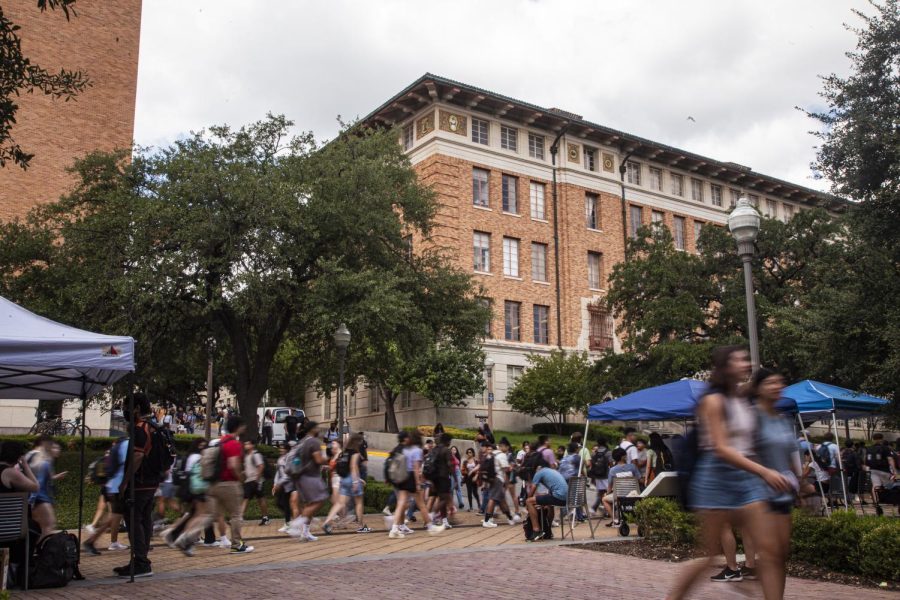Stories of Stories: Lee Walker recounts fight for speedless Speedway
March 3, 2023
It all started with a walk.
After a staff meeting, Lee Walker and Larry Faulkner, the then-president of UT, headed toward Speedway. However, instead of vibrant tabling, food trucks and droves of students, Faulkner and Walker stood in the midst of car traffic.
The year is 1999, and Speedway is still a road.
It would take a 17-year fight for car-centric Speedway to turn into a pedestrian mall, but through the work of student leaders, gray asphalt became yellow bricks, parking spaces became gathering places and Speedway became the artery of UT student life.
Walker, UT senior research fellow, said the idea for the pedestrian mall came from a comment Faulkner made during their walk.
“We stood in the middle of Speedway and talked about the place,” Walker said. “Cars and vehicles were weaving around us with pedestrians and cyclists … (Faulkner) took in the scene and said ‘there’s certainly a lot of traffic,’ almost to himself.”
Walker, who said he knew an opportunity when he heard one, began to envision a more pedestrian-friendly Speedway.
As the two continued their walk, Walker said he suggested hiring New York-based Project for Public Spaces to design the mall. Proposals included laying the street with lighter-colored bricks, creating outdoor gathering areas and connecting campus communities to the larger city of Austin. But due to budget constraints and worries about lost parking, Walker said the project would languish for years.
“Some people say that the UT president’s primary job is to deliver a winning football team and provide ample parking,” Walker said. “There’s a lot of potential parking along (Speedway).”
When the recession of 2008 caused the U.S. economy to spiral, Walker said the budget decreased and other projects took precedent. After years of pressure from Student Government leaders, work on Speedway began in 2016. Construction ended in 2018, nearly two decades after Walker and Faulkner’s walk.
“I just remember coming up to it one day on my bike and there it was,” Walker said. “You couldn’t go on it and then suddenly you could. That was a delicious feeling.”
The student leaders’ commitment to the long-term project exemplifies the idea of “cathedral thinking,” where individuals work towards a shared goal, even if they do not expect to witness its realization or receive credit for it, Walker said.
“It’s a different perspective in this … fast gratification culture of ours,” Walker said. “(When it opened,) there was no fanfare. No mention of Austin Gleeson (former head of the Campus Master Planning Committee). No mention of the students who helped push it through UT’s formidable bureaucracy.”
Though those who pushed for Speedway did not receive recognition, Walker said their impact on UT remains visible. Mechanical engineering freshman Allison Nguyen said the UT community would feel completely different without Speedway.
“Speedway is where you find out about organizations, it’s where you run into your friends, it’s the way you form the relationships that become so meaningful to you at UT,” Nguyen said.
Walker said the buzzing nature of Speedway embodies a fundamentally human quality.
“We’re endlessly fascinated with other humans,” Walker said. “I like to sit close to the road on those chairs and watch students go by. It makes me very happy to see it so vibrant and used to (bring us) closer to one another.”



